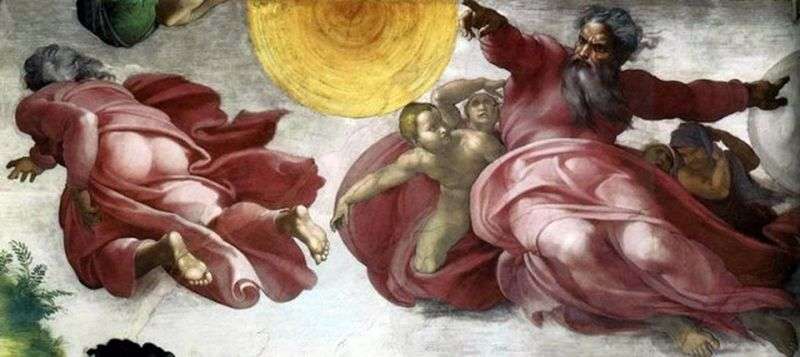
The separation of light from darkness, the fresco by Michelangelo Buonarroti, a fragment of the Sistine Chapel painting. The overall design of the Sistine ceiling in many respects remains unclear.
It is not known what general ideological program is connected with the content of compositions located in the middle of the arch; so far it has not been convincingly explained why Michelangelo oriented these compositions in such a way that their examination should begin with “Noah’s Drunkenness” and end with “Separation of light from darkness,” that is, in the reverse order of events in the Bible; the meaning of scenes and images in the formwork and steady rest compositions remains dark. But it would be a mistake, based on the fact, to assume that the content of the ceiling remains unknown to us.
With all the ambiguity of individual plot motifs and the lack of deciphering of possible symbolic juxtapositions, the true basis of the content of the mural is quite obvious – it is expressed with exceptional vividness not only in plot compositions, but also in “plotless” images and even in figures with a purely decorative purpose – this is the apotheosis of creative the power of man, the glorification of his physical and spiritual beauty.
The episodes of the first days of creation chosen for the subject frescoes are extremely favorable for the expression of this idea. In the frescoes “The Creation of the Sun and the Moon” and “The Separation of Light from Darkness” flying in outer space Savaof, presented in the form of an old man of titanic power, in a violent impulse, as if in the ecstasy of creative energy, creates and shines space with one movement of widely spread arms. The man here is represented by the artist Michelangelo Buonarroti in the image of the demiurge, with his infinite power of creating worlds.
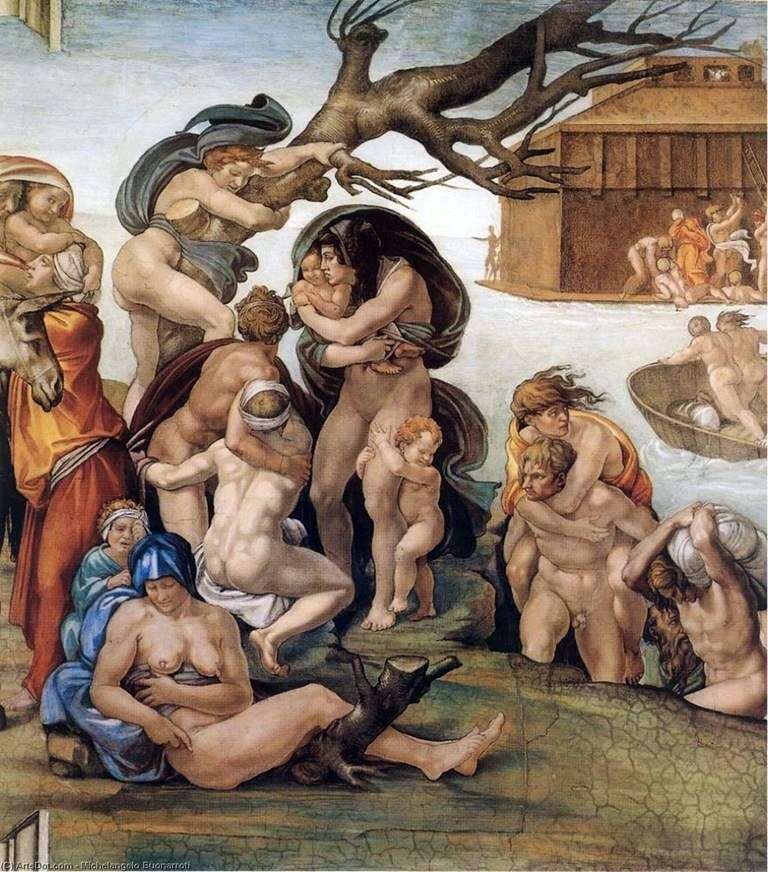 Flood, a fragment of the painting of the Sistine Chapel (fresco) by Michelangelo Buonarroti
Flood, a fragment of the painting of the Sistine Chapel (fresco) by Michelangelo Buonarroti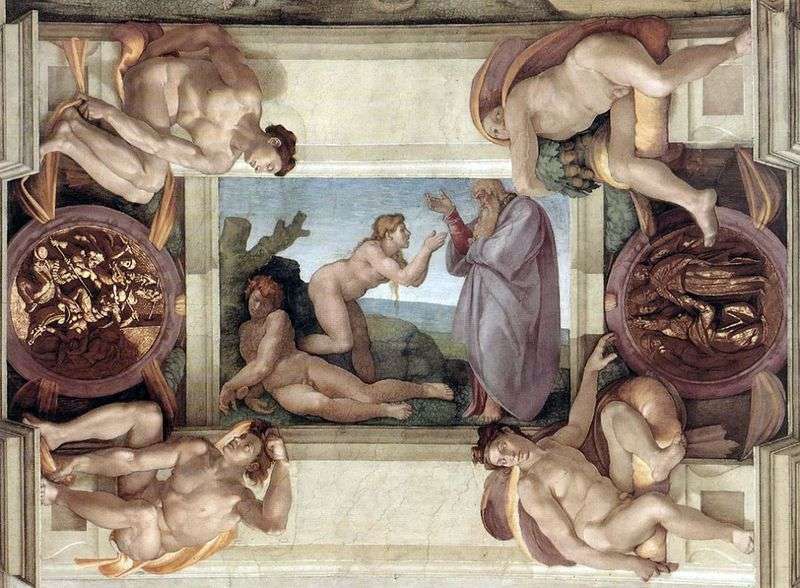 The Creation of Eve by Michelangelo Buonarroti
The Creation of Eve by Michelangelo Buonarroti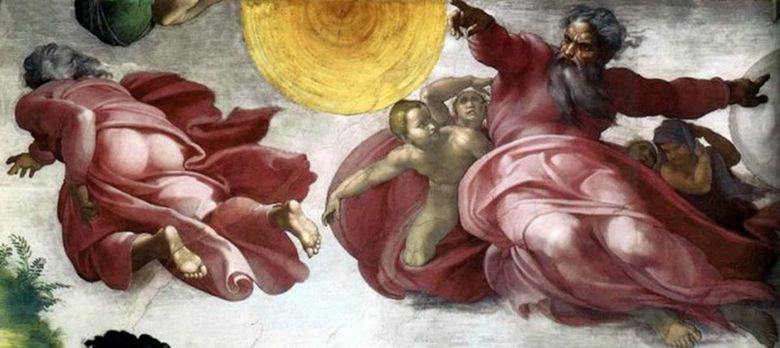 Séparation de la lumière et des ténèbres – Michelangelo Buonarroti
Séparation de la lumière et des ténèbres – Michelangelo Buonarroti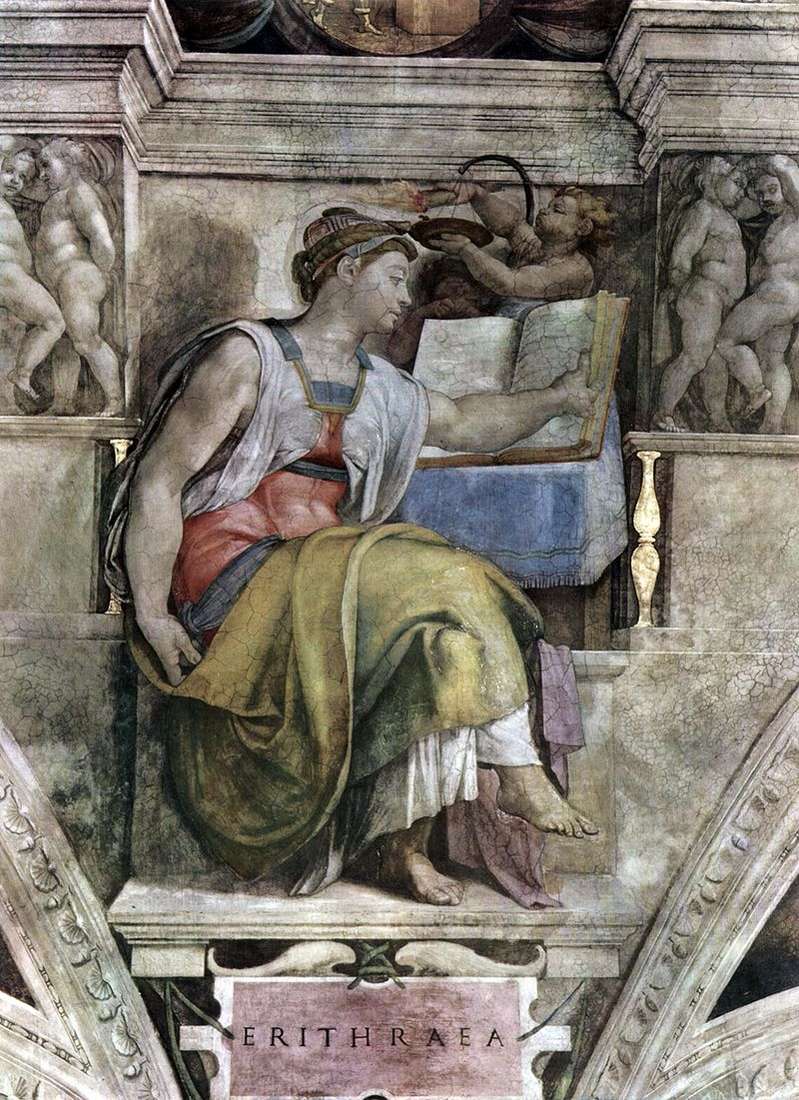 Eritrean Sibyl (fresco) by Michelangelo Buonarroti
Eritrean Sibyl (fresco) by Michelangelo Buonarroti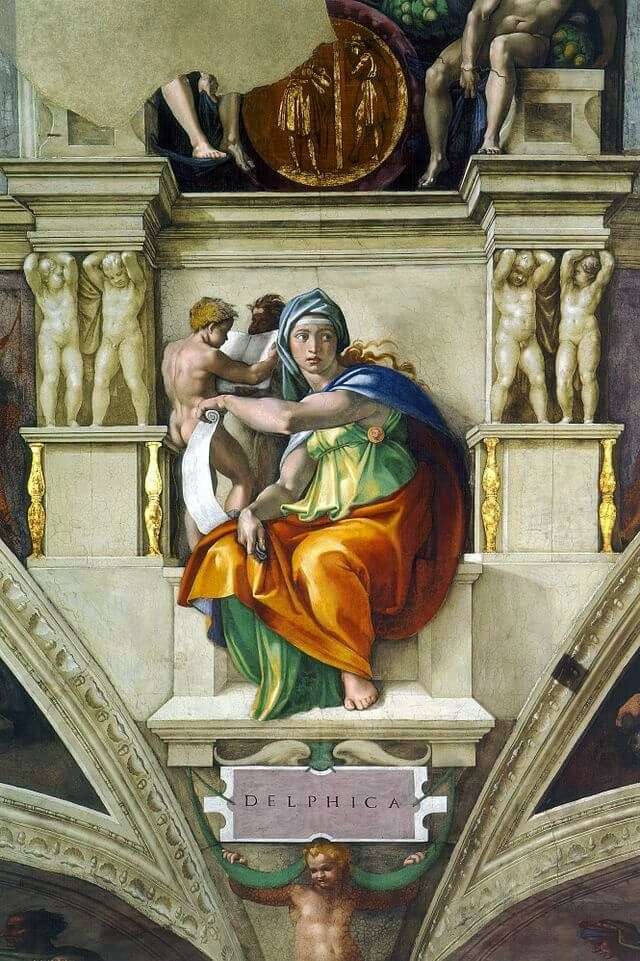 The Delphic Sibyl by Michelangelo Buonarroti Buonarroti
The Delphic Sibyl by Michelangelo Buonarroti Buonarroti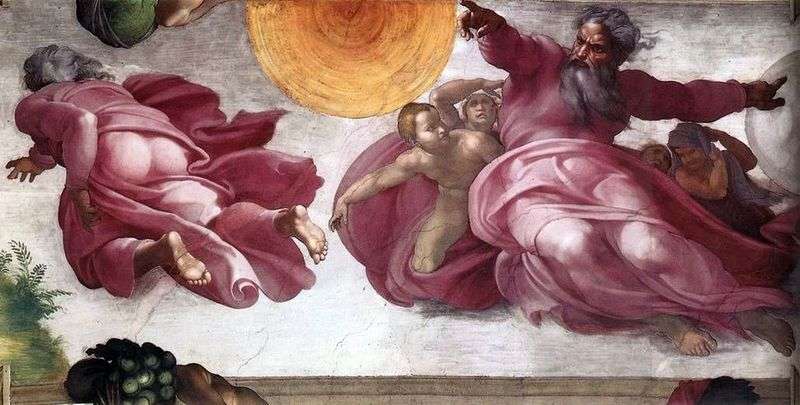 The Creation of the Luminaries and Plants by Michelangelo Buonarroti
The Creation of the Luminaries and Plants by Michelangelo Buonarroti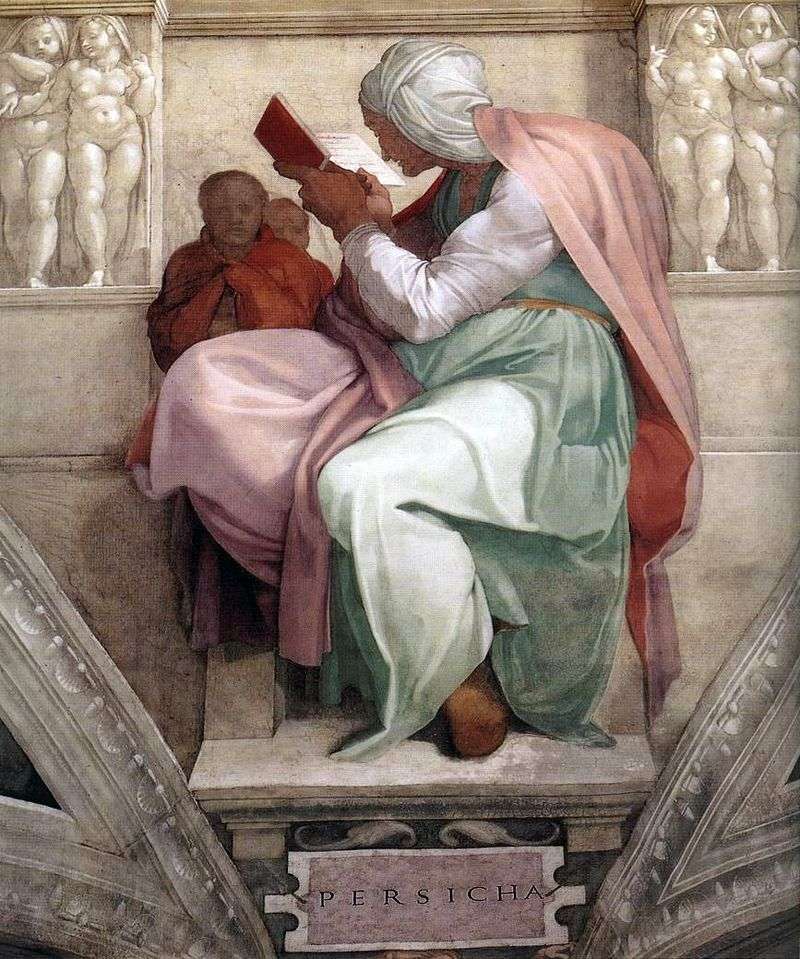 Persian Sibyl (fresco) by Michelangelo Buonarroti
Persian Sibyl (fresco) by Michelangelo Buonarroti Detail of the Sistine Chapel painting (fresco) by Michelangelo Buonarroti
Detail of the Sistine Chapel painting (fresco) by Michelangelo Buonarroti